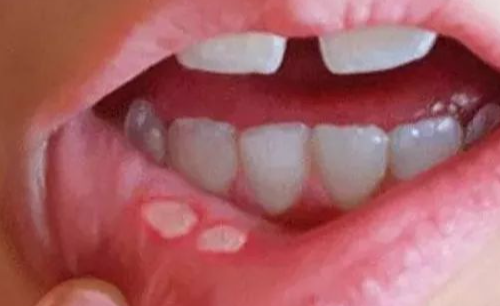
We’ve all had them. That familiar, painful little ulcer that pops up inside your cheek or on your gum—the dreaded canker sore. You know the drill: a little dab of numbing gel, avoiding orange juice for a few days, and waiting it out. They’re a nuisance, but they’re a familiar one.
But what happens when the sores are different? They appear in clusters, or they’re accompanied by a fever, or they look more like blisters than ulcers. What happens when they don’t follow the canker sore rules? In these cases, it’s crucial to understand: these sores in your mouth aren’t canker sores. They are your immune system’s battle standard, raised high against a specific invader.
Learning to tell the difference is key to getting the right treatment and peace of mind.
The Usual Suspect: The Common Canker Sore (Aphthous Ulcer)
First, let’s identify the enemy we know.
- Location: Inside the lips, cheeks, on the gums, or under the tongue—on movable, soft tissues.
- Appearance: A round or oval ulcer with a white or yellowish center and a bright red border.
- The Feel: Painful to the touch, especially by acidic or spicy foods.
- Key Trait: They are not contagious. You can’t give one to someone else.
When a sore breaks this pattern, it’s time to suspect another culprit.
When It’s Not a Canker Sore: Decoding the Other Messages
- The Clusters of “Water Blisters”
- What They Are: Cold Sores (Fever Blisters)
- The Real Story: This is a Herpes Simplex Virus (HSV-1) outbreak. Unlike canker sores, these begin as clusters of tiny, fluid-filled blisters, often on or around the lips, though they can occasionally appear inside the mouth on the hard palate (the roof of your mouth). They eventually crust over and heal.
- The Crucial Difference: They are highly contagious from the tingling first sign until fully healed. This is your body fighting a recurrent viral infection that lives dormant in your nerve cells, often flaring up with stress, sun exposure, or illness.
- The Widespread, Fiery-Red Map
- What It Is: Oral Lichen Planus
- The Real Story: This isn’t a simple sore, but a chronic inflammatory condition. It can look like a lace-like network of white lines, or it can present as painful, red, atrophic patches that erode the surface of your cheeks, tongue, or gums. It often affects both sides of the mouth symmetrically.
- The Crucial Difference: It’s a sign of your immune system mistakenly attacking the cells of your own oral mucous membranes. It’s not contagious, but it is a chronic condition that needs a dentist or doctor’s management.
- The Sudden Onslaught with Fever
- What It Is: Hand, Foot, and Mouth Disease (HFMD)
- The Real Story: Caused by a different virus (usually Coxsackievirus), this condition lives up to its name. It causes painful red spots and blisters in the mouth (often on the tongue and insides of the cheeks), accompanied by a rash on the palms of the hands and soles of the feet. It’s most common in children but can affect adults, often more severely.
- The Crucial Difference: The combination of mouth sores with a fever and a distinct rash on the hands and feet is the giveaway. It is contagious and requires supportive care while the virus runs its course.
- The Sores from a Misfiring Immune System
- What They Are: Autoflammatory Conditions
- The Real Story: Conditions like Lupus or Behçet’s disease can cause mouth ulcers that resemble canker sores but are often more severe, more frequent, and are part of a larger systemic picture. In Behçet’s, for example, the sores are typically one of the first signs, accompanied by eye inflammation and genital ulcers.
- The Crucial Difference: The sores are a systemic warning sign, not a local irritation. Their persistence and association with other symptoms in the body are the key clues.
When to Definitely See a Doctor or Dentist
Any sore that doesn’t heal within two weeks needs to be evaluated. Additionally, see a professional if you experience:
- Sores that are unusually large or spreading rapidly.
- A high fever accompanying the sores.
- Difficulty drinking or staying hydrated due to the pain.
- A sore that is hard, fixed, and doesn’t move when you touch it.
These sores in your mouth are more than just pain; they are a dialect of your body’s language of health. A common canker sore is a simple, local complaint. But sores that break the mold are your immune system’s way of sending a more urgent memo. By learning to read these signals, you can move beyond self-diagnosis and seek the specific care you need, ensuring that a minor irritation doesn’t mask a more significant message your body is trying to send.